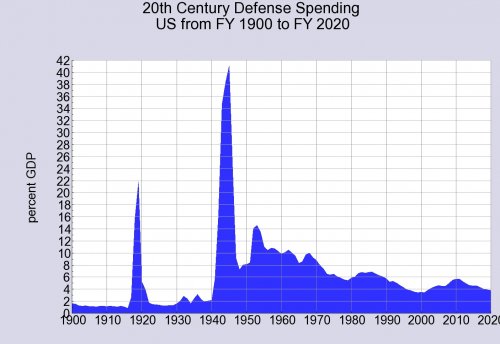The F-35B, the Marine Corps version of the stealthy Joint Strike Fighter, has the shortest range and the smallest payload of any of the F-35 variants. It’s also the most expensive, with a unit price tag of $140 million, not including R&D. The Marines’ requirements—to do short-takeoff, vertical-landing (STOVL) and fit aboard the ships the Corps uses—dictated the use of a single engine and drove the internal layout of the fuselage.
Marine Corps leaders have been confident that the F-35B alone will deliver strategic options that justify its price and its impact on the Air Force and Navy versions. That’s a tall order. A Marine expeditionary force is organized around a single amphibious warfare ship, classified as an LHA or an LHD. These are 50,000-ton warships but they have to carry Marines, their equipment, and helicopters as well as jet fighters. Normally, the air combat element includes just six Harrier “jump jets,” and no force of six aircraft has won a war yet.
The idea behind the Marine Harrier force has always been that it can expand beyond the ship’s capacity, by using shore bases that other fighters cannot reach: short civilian runways or even stretches of road. This kind of operation has been performed by the Marines, in combat, exactly three times in the 40-year history of the Harrier force.
The question today is a simple one: What scenario can we contemplate where you need supersonic, stealthy multi-role fighters, but you don’t need the full carrier air wing? In the past few months, the Marines have rolled out some potential answers.
Corps commandant Gen. Joseph Dunford told a House defense appropriations subcommittee in late February that a shipboard detachment of four to eight F-35Bs would deliver “the same kind of access” in “high-risk regions” as a joint strike package today that would include “cruise missiles, fighter aircraft, electronic-warfare platforms, aircraft which specialize in suppression and destruction of enemy air defenses, and strike aircraft.” The F-35 detachment is “a day-one, full-spectrum capability against the most critical and prohibitive threats,” Dunford said.
On land, the Marines would use a new concept of operations known as distributed STOVL operations (DSO), said Lt. Gen. Jon Davis, Marine deputy commandant for aviation. The idea behind DSO is to obtain the advantages of forward basing—deeper reach and faster response—while keeping people, aircraft and equipment on the ground safe from counterattack from threats that are likely to include guided tactical ballistic missiles.
Mobility is the key. The plan calls for mobile forward arming and refueling points—improvised bases that supply fuel, ammunition, and the minimum support necessary to turn jets between sorties. The idea is that they can moved around the theater inside the adversary’s targeting cycle—assumed to be 24-48 hours—so that they can survive without being accompanied by anti-missile defenses. Decoy bases would be established to complicate the enemy’s targeting problem.
Both the small shipboard unit and the DSO idea have obvious problems.
Dunford’s eight-aircraft detachment would be kept very busy sustaining combat air patrols, providing over-the-horizon intelligence, surveillance, and reconnaissance (ISR) and performing close air support and strike. Britain’s new aircraft carriers are 70,000-ton ships because the operations analysts calculated that a stand-alone air wing would need 24 aircraft to cover those missions.
Without a carrier, Dunford’s force has no persistent ISR or airborne early warning—and any nation qualifying as a high-risk threat will have anti-ship cruise missiles on fast attack craft, on trucks or masked in commercial containers. Airborne early warning was invented in World War II in the Pacific, because by the time the kamikazes appeared on the horizon, it was too late for an effective defense. The same goes for this new breed of cruise missiles.
DSO sounds like an adventure in logistics. The Marines’ biggest wartime off-base Harrier operation, in 1991 during Desert Storm, was supported by 45 8,000-gallon tanker trucks, and the F-35B is more than twice the Harrier’s size. Davis envisages that in some cases, the new improvised base will be supplied by KC-130J tankers—but each sortie will deliver five F-35B-loads of fuel at best. As was finally confirmed in the run-up to last year’s Farnborough air show, the F-35’s exhaust is tough on runways: Many tons of metal planking will be needed to protect poor-quality runways or roads, even in a rolling vertical landing. It will have to be moved on the same cycle as the rest of the mobile base.
Force protection could be a challenge. The mobile base will need either a huge sanitized zone or its own active defense against rockets, mortars, and shoulder-fired anti-aircraft missiles, which no practical decoy or jammer will distract from the F-35B’s exhaust.
These ambitious operational concepts should be tested, in force-level exercises against an aggressive and independent Red team, before we get much further into the $48 billion F-35B procurement. There could be no better use for the first F-35B squadron, once Marine leaders declare it ready for combat later this year.

